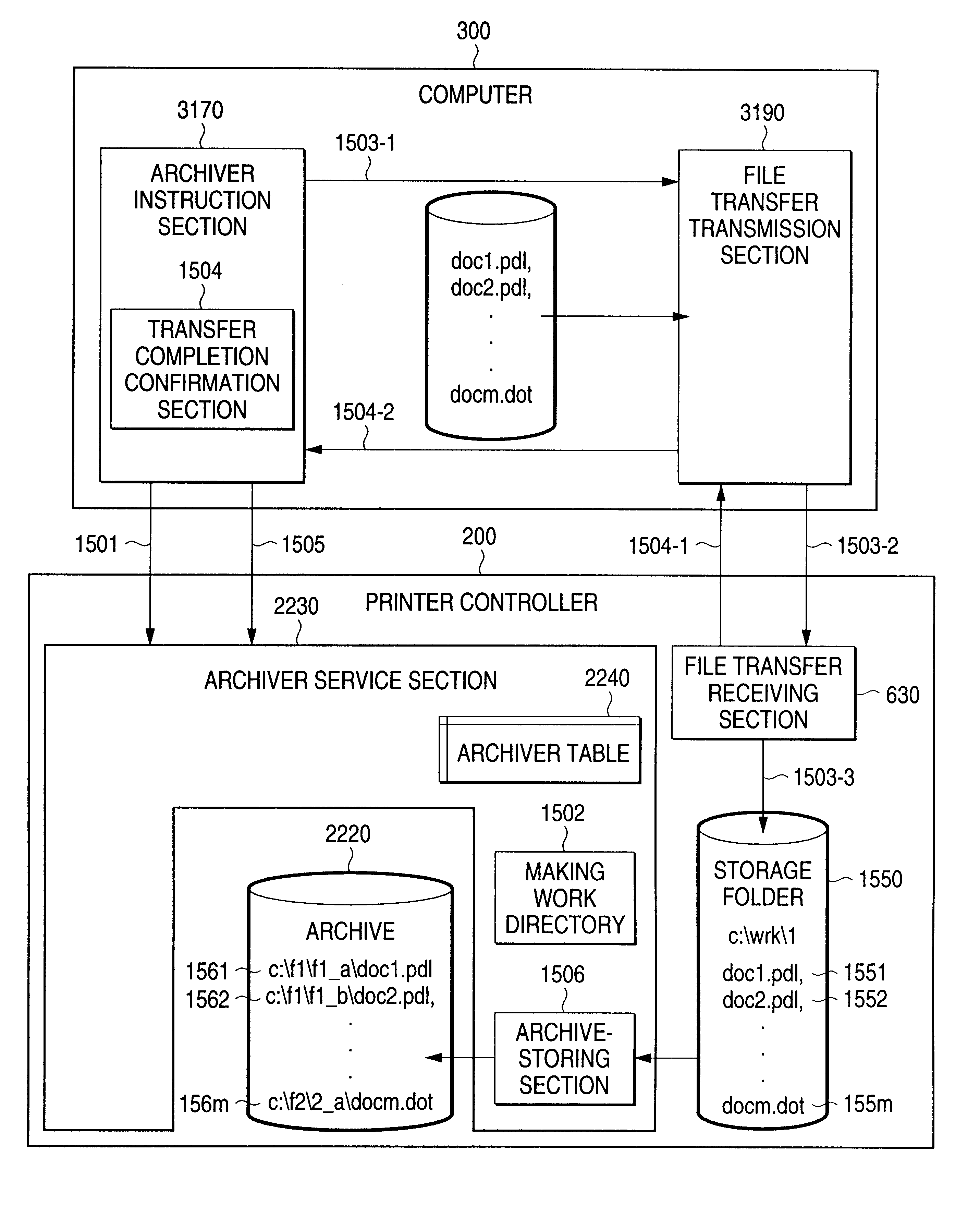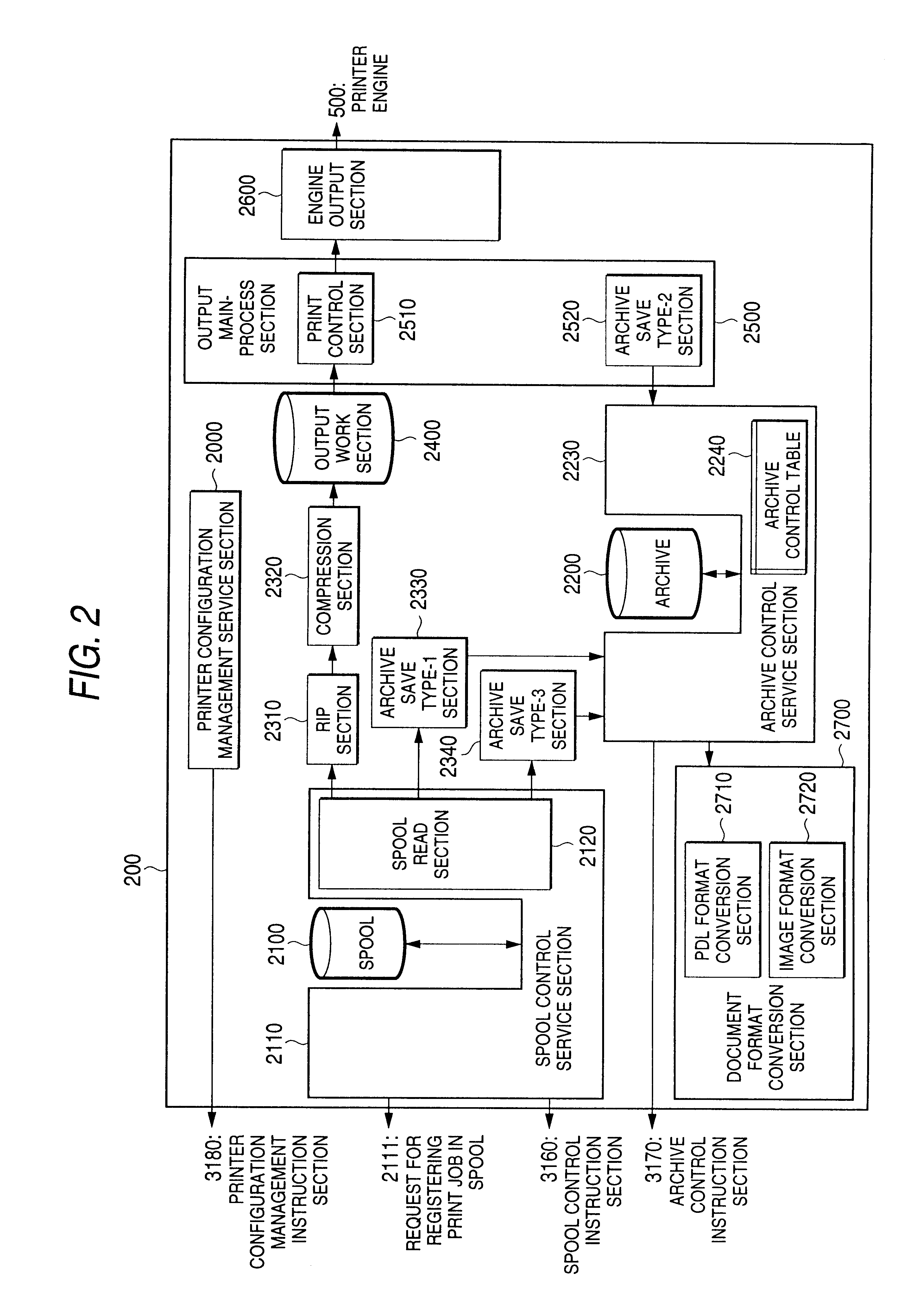Document printing method
a document printing and document technology, applied in the direction of digital output to print units, instruments, visual presentations, etc., can solve the problems of deteriorating picture quality when the document is edited, affecting the quality of the document, and the inability to edit the document through the application program
- Summary
- Abstract
- Description
- Claims
- Application Information
AI Technical Summary
Benefits of technology
Problems solved by technology
Method used
Image
Examples
first embodiment
As mentioned above, the user of the printer can direct the printer to print and store documents in an arbitrary combination, by way of the computer. As a result, the user of the computer can utilize the printer by designation of an arbitrary combination of print and storage commands according to the type and objective of a document, as necessitated.
A document may be stored in PDL format and in dot image format, as well as in an arbitrary combination of these formats. Accordingly, in a case where a document is simply reprinted, a stored document of dot image format is used for high-speed reprinting of the document. A stored document of PDL format is used for assembly editing on imposition, thereby enabling high-quality editing of the document without involving deterioration in picture quality.
The user of the computer can direct the printer to use a combination of storage formats according to the type and objective of the document, as necessitated.
When an existing document is capture...
second embodiment
the present invention will now be described.
Drawings to be used for describing a second embodiment are based on the drawings relating to the first embodiment, and constituent elements are further added to these drawings. More specifically, constituent elements are added to FIGS. 2, 3, and 6. Other drawings relating to the first embodiment are also used without modification in describing the second embodiment.
The constituent elements added to the drawings in the second embodiment are unnecessary for the first embodiment. In order to save space used by the drawings, the same drawings are used for describing the two embodiments.
First, the constituent elements added to FIGS. 2, 3, and 6 will be described.
As shown in FIG. 6, the printer controller 200 is additionally provided with a document format conversion section 2700. This document format conversion section 2700 is directed to convert the documents of storage format stored in the archive 2200 into documents of display / editing format...
third embodiment
The third embodiment yields the following advantageous results.
(1) At the time of storing documents from the computer 300 to the printer controller 200, standard file transfer means (such as ftp or http) can be employed for transferring files, thereby eliminating a need for developing a file transfer program. By use of a field-proven file transfer function such as ftp, the performance and reliability of file transfer can be ensured.
(2) Further, storage of files into the primary location; i.e., the archive 2200, can be effected after correct transfer of files to the receiving work directory (1550) has been ascertained.
As a result, the user and a system manager can ascertain and distinguish failures in storage of files into the archive 2200 and failures in file transfer. If files are directly stored into the archive 2200 without file transfer being ascertained, the user or the system manager may encounter difficulty identifying a failure, because the user cannot distinguish failures.
T...
PUM
 Login to View More
Login to View More Abstract
Description
Claims
Application Information
 Login to View More
Login to View More - Generate Ideas
- Intellectual Property
- Life Sciences
- Materials
- Tech Scout
- Unparalleled Data Quality
- Higher Quality Content
- 60% Fewer Hallucinations
Browse by: Latest US Patents, China's latest patents, Technical Efficacy Thesaurus, Application Domain, Technology Topic, Popular Technical Reports.
© 2025 PatSnap. All rights reserved.Legal|Privacy policy|Modern Slavery Act Transparency Statement|Sitemap|About US| Contact US: help@patsnap.com



